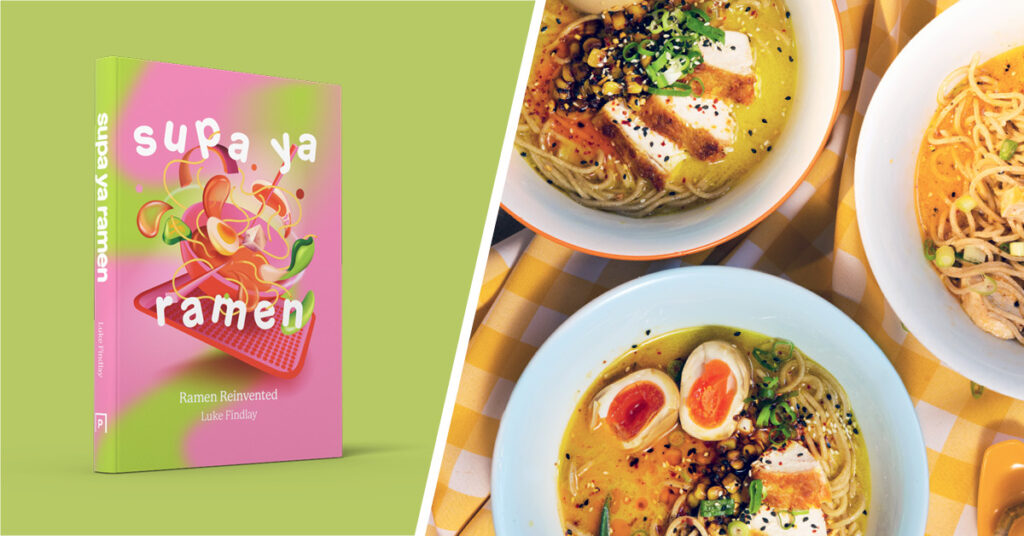To call a plant a weed is doing it a real injustice. It’s simply a wild plant that is not deliberately cultivated, growing where it is not wanted. By this definition, virtually any plant outside a carefully tended garden is a weed.
The intolerance of weeds is a mark of how we have turned our backs on nature and urbanised our land and lives. In The Joy of Weeds, illustrator Paul Farrell uncovers the wild beauty in weeds and explains the benefits of rewilding ourselves a little. Weeds can be medicine, food, and an important aid for wildlife. One person’s weed is another’s wild beauty.
To celebrate the publication of The Joy of Weeds, we asked our team what their favourite weed is, and without further ado, this is what they said.

Big Bold Burdock
Common name: Burdock
Many of us have encountered burdock while walking through fields or forest edges, but don’t even realize it until we’re pulling the Velcro-like, prickly seedheads or burrs from our clothing and footwear.
This was chosen by our Marketing Director, Jo R, who picked it because: ‘It reminds me of pulling those little prickly seedheads from a school jumper, and of Dandelion and Burdock delivered in glass bottle by the milkman to my auntie in Yorkshire.’
Weed the facts: In 1948 George de Mestral, a Swiss inventor, developed Velcro after burrs from burdock stuck to his dog’s fur after a walk.
Defending the Dandelion

Common name: Dandelion
The dandelion is a British native perennial common to roadside verges. Its bright yellow flowerheads are like little bursts of sunshine above a rosette of jagged leaves.
This was chosen by our trainee, Jabin, who said: ‘I’ve chosen dandelion as my favourite because no weed embodies my childhood more than this one. I have so many happy, care-free memories of picking them in the park as a kid and blowing their seeds away. I’ve since learnt that its name derives from the French dents de lion, meaning ‘lion’s tooth’, after the shape of its leaves, and that dandelions are the only flower to represent three celestial bodies (the yellow flower as the sun, the puff ball as the moon, and the dispersing seeds as stars) – which is so romantic!’
Weed the facts: During the Second World War, when coffee was almost impossible to find, people made an alternative from the roasted and ground roots of dandelions.

Respect the Elder
Common name: Elder
Much favoured by foragers, elder is the very essence of summer with its shower of fragrant, creamy white flowers and clusters of dark fruits. It is abundant throughout the UK, in woodland and roadside hedgerows.
This was chosen by our Senior Marketing Manager, Jo K, who picked it because: ‘My favourite weed is the Elder because I love the folklore about it being guarded by the Elder Mother and that she should be asked before taking a branch! Also, Elderflower cordial and wine are delicious.’
Weed the facts: Elderflowers contain both the male and female reproductive parts, which means that they can self-fertilize. (Who knew?)

Unforgettable Poppy
Common name: Poppy
The poppy is the symbol of remembrance, and at the height of summer its striking flowers stand out from afar, painting fields with a vivid scarlet haze. It is found mainly on farmland, waste ground, field edges and roadsides.
The Poppy was chosen by HQ’s Head of Marketing, Claire: ‘Poppies are so delicate and bright and I love the papery translucence of their petals.’
Weed the facts: Ancient Egyptian doctors used to administer to poppy seeds to relieve pain.

A Bluebell Spectacle
Common name: Bluebell
Bluebell’s emergence is a sure sign that spring is in full swing. These sweet-smelling flowers nod to one side of the stem and have creamy white-coloured pollen inside. They occur in woodland, fields and along hedgerows.
Chosen by our Pavilion Head of Marketing, Colette, who said: ‘The flowers may be small on their own, but the sight of many bluebells carpeting the woodland floor is such a joy and one that I seek out every spring. The ethereal purple glow that seems to hover just above the ground, bathed in shafts of soft sunlight, makes them seem magical and so it’s not hard to see how so much folklore exists around them.’
Weed the facts: The sticky sap from bluebells was once used for bookbinding and arrowmaking. In Elizabethan times, starch for the ruffs of collars was made from the crushed bulbs.

Foxglove Love
Common name: Foxglove
This biennial is a personal favourite of mine and is often grown as an ornamental plant due to its structural form and vivid flowers; it also thrives in open woodland and moorland. Like towering sentinels it hugs hedgerows, greeting walkers as they pass.
The foxglove was chosen by our Senior Marketing Executive, Becca, who picked it because: ‘I think they’re absolutely beautiful, and I absolutely LOVE the audacity of a beautiful flower (weed!) being that’s poisonous; so cheeky. I’m also a big fan of anything that helps the bees!’
Weed the facts: Foxgloves are also known as witches’ glove and dead man’s bells, due to their toxic nature.

Be In Clover
Common name: Clover
A busy summer meadow buzzing with bees and other insects hovering above a carpet of clover is a wonderful sight. Clover is common in all types of grassy areas in the UK, from lawns to pastures, roadsides to meadows, and as both a wild and a sown flower.
This was chosen by our Marketing Assistant, Caroline, who picked it because: ‘Clovers remind me of sunny summers back in Denmark. I love that they’re considered lucky, and I’d scour our lawn for ages as a kid just to make sure there definitely weren’t any four-leaf ones. One can never have too much good luck!’
Weed the facts: In 2009, a farmer in Japan set the record for the most leaflets on a clover stem – fifty-six.
The Joy of Weeds by Paul Farrell is out now!




